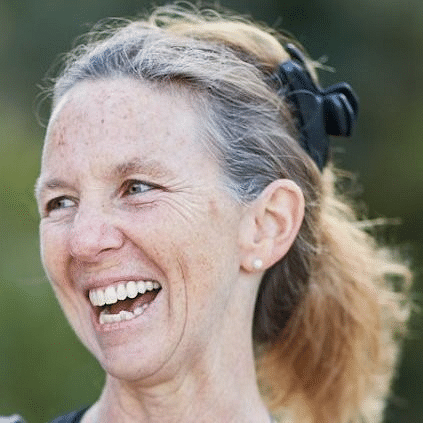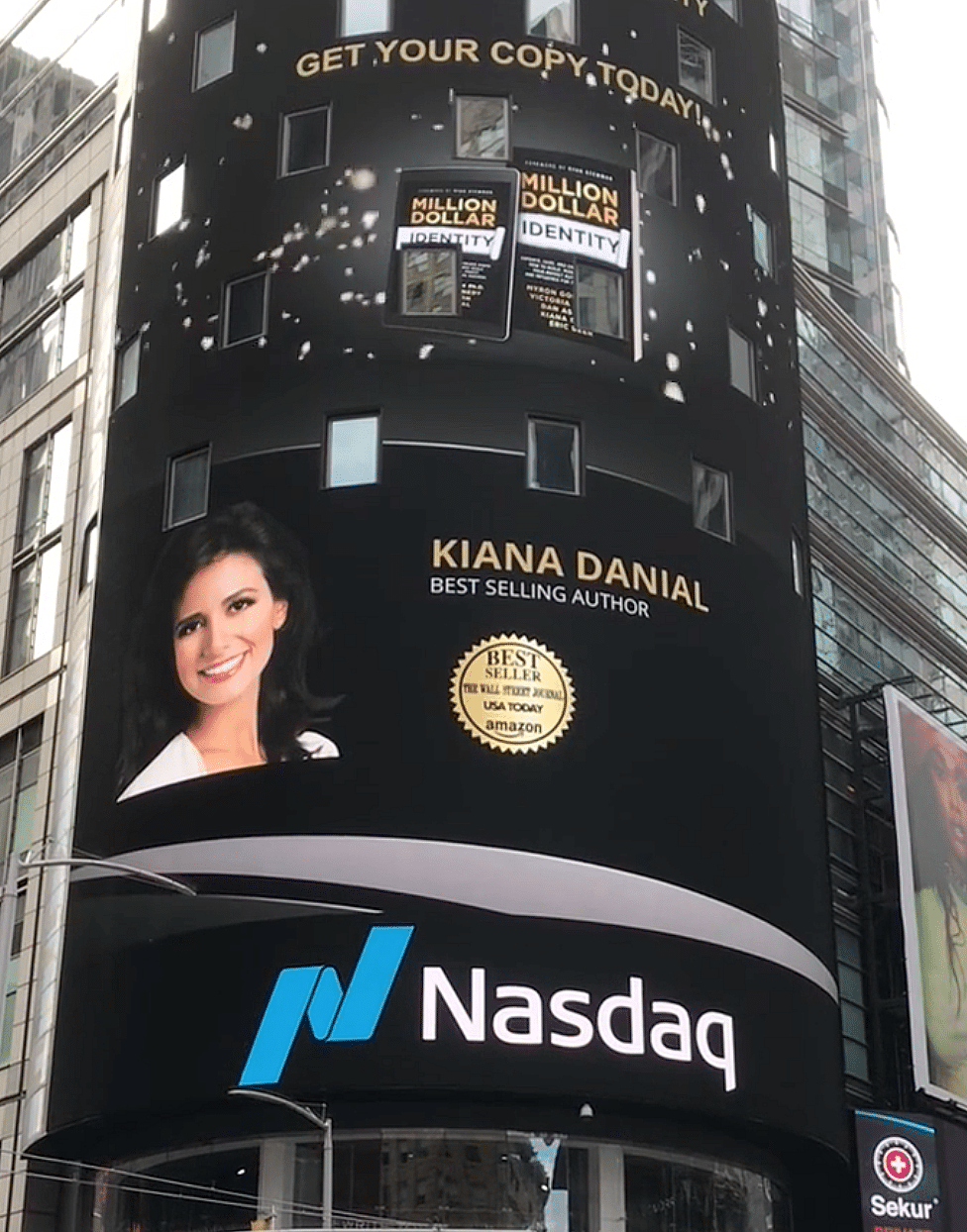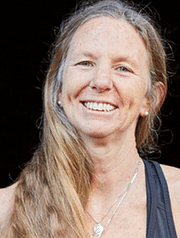
If you want to get noticed, here’s a million-dollar reason why you should consider being part of an anthology
By Jim James, Founder EASTWEST PR and Host of The UnNoticed Entrepreneur.
Jamie Wolf helps people get noticed through the power of books. Joining me on the new episode of The UnNoticed Entrepreneur from Beaufort, South Carolina, she talked about how entrepreneurs can use publishing as part of their strategy to get noticed.
Image from LinkedIn
From Entrepreneurs to Bestsellers
Jamie works with entrepreneurs who have something to sell (because if you’re in business, you need to generate some profits). Hence, she’s not ashamed to say that the entrepreneurs she works with should have something that's going to sell in the $5,000 to $50,000 range.
And when people talk about books, they say that books aren’t producing enough return on investment (ROI). So what she does is work with entrepreneurs and help them write very strategic books. And these, in fact, are not solo-authored books.
The concept behind it is that entrepreneurs are always very, very short on time. If she can help you produce 20 pages of content that are as effective and get the same results as 200 pages of content — and that book can be produced by the beginning of next quarter — then you don’t have to chase the next shiny object. You don't have to figure out what the economy is going to be doing two years from now when the book finally gets published.
Jamie and her team go very fast — they’re very tight, they provide a framework, and they help people co-author or do collaborative anthology projects. Because if you have an audience of 10,000 and another co-author has an audience of 10,000, each of you now has an audience of 20,000. You're edifying your co-author and their audience becomes warm to you instead of cold and vice versa.
She helps entrepreneurs write, publish, and market books that become bestsellers on USA Today, Wall Street Journal Bestsellers, and the like. Then, she also holds a big celebration and puts you on the Nasdaq billboard in Times Square to provide marketing material for you going forward.
Gathering Multiple Authors for an Anthology
The idea of an anthology is great. But it might dilute the entrepreneur’s voice. It might also challenge them in terms of who the audience is. How then does Jamie put together an anthology with multiple authors?
She often gets two objections from people who have never written anything: “I don't want to be lost in the noise” and “What if my competition is there? What if the audience isn't right for me?”
Image from Unsplash
As an example, Jamie frequently cites Jack Canfield. He's published and sold half a billion books (probably more at this point). And he did that because he didn't stop after one book and he didn't solo-author all his books.
He has chosen different influencers very carefully and strategically — whether it's one person or five other people who will co-author the book. And he's written many, many, many books. And like him, know that you have more to say, so don't stop with just one book. When you’re writing in an anthology, you can be in an anthology with this group of people this quarter; then in a different group in a different anthology next quarter.
Jamie works specifically with entrepreneurs who tend to be in the digital marketing space. They might be coaches. They might be e-commerce people. And their audiences will overlap.
It's so much about a business’ mindset. Every single different business — whether they’re in pavement management or dry cleaning — the thought behind how entrepreneurs create systems and processes, how they manage their budget, how they market themselves are all very common themes regardless of the type of business.
How do you get more prospects? How do you convert those prospects to paying customers? How do you fulfll whatever it is that you've sold so that they're satisfied and they come back? How do you build relationships? All of these things are very common across businesses. This is why she can place different authors and entrepreneurs together within a collaborative effort to talk about all of these sorts of things.
She also provides a framework for each author so that it flows from chapter to chapter. Hence, even though it's a different voice, a different topic, a different audience, the reader won’t go, “What just happened? I feel like I just ate spaghetti that got thrown on the wall and I'm picking up the pieces sliding down the wall.”
Careful Curation
An anthology is really a collection of works. It's a group of different authors with one overall subject.
To address differences in tones of voice and possible overlaps in subject matters, Jamie compared an anthology to a room in a museum where the artwork is curated: You might have all impressionists in one room; you might have contemporary pieces in one room and very classical in another. An anthology is a curated work where she and her team have selected entrepreneurs who can complement each other and whose audience will likely buy from each other at different stages.
Image from Unsplash
As far as voice is concerned, she shared that in her early days of doing this, the issue that she often ran into is the level of comfort that an author has with a certain language. For instance, Gary Vaynerchuk has a very colourful way of speaking; other authors are more Christian-oriented and they’d be highly offended to stand on stage next to Gary and have that language. What she does then is to step in and get a consensus and see who's comfortable with what language.
She also has to be careful about setting ground rules. There should be no hate speech and no racial-related things. The anthology has to be kind, informative, constructive, and instructive.
Beyond that, she leaves the tone of voice a little bit to the individual entrepreneur because their audience is very accustomed to hearing their tone of voice. And if they changed it in the ghostwriting too much, their audience would go, “That's not Keenan. I know Keenan. I listen to Keenan on Instagram and TikTok every day, and that is not Keenan. What did you do?"
Apart from providing the framework, they just clean up the writing enough so that it's consumable by reading.
Jamie also said that as people learn in different ways, they also record and edit so that they can turn the print book into an audiobook for people to consume information that way. Then, they also make it into an ebook. If the authors want to use their individual chapter or the entire book as a lead magnet in their sales funnel, they can do that as well.
The “Million Dollar Identity” Book
Jamie’s recent project, a book called “Million Dollar Identity,” became a number 2 bestseller in Wall Street Journal when it was launched. They also had a book signing and celebration event in New York City and, as mentioned, the authors were featured on the Nasdaq billboard.
In the book, the authors include https://myrongolden.com/, who’s well-known and a huge influencer in the ClickFunnels world. There’s also Kiana Danial who already has four Wall Street Journal bestselling books. She's in the investment space and she helps women learn how to invest for themselves and control their finances and their children's future investment periods. She's also a great example of someone who keeps saying “yes” to more book projects.
Screengrab from Million Dollar Story
The point of mentioning these is that she often hears this one hesitation: “Writing a book is so hard and it takes two years and I have to go live as a hermit up in the mountains. And I can't do that.” Jamie advised letting go of that thought about writing a book. Although some books need that, the kind of books that they help write for business purposes don’t.
The other objection she hears is that there’s no ROI. It might cost a whole bunch of money to work with a publisher and a marketer. Even mainstream, big-name publishers don't help with marketing much anymore these days. They expect you to come with an audience of millions or an email list of tens of thousands — they want you to do your own marketing work to get your book out there.
People think there's no ROI: If I can only sell a couple of copies, what do I do? I can't quit my day job and then just go have this new coaching business that I've always envisioned for myself.
However, if what the book does is build a relationship with your audience and address any objections, it's going to shorten lead time, conversion time, and conversion costs. It might repel certain people (It only shows that they’re not your person, so they're never going to work with you and buy from you. And that's fine). But it's also going to show your audience that you're human — you had some ups and downs. If you can do it and provide some case studies and success stories, then they can see themselves in that journey and feel more confident that they can work with you. The ROI comes in positioning what it is that you offer and do in your daily business so that people come in and buy from you.
In a typical Wall Street Journal launch, one requirement to be a bestseller is that you sell anywhere between 6,000 to 10,000 books in a six days. If you have 10,000 eyeballs on your book in the first six days, chances are good that one of those people is going to opt-in. What you need to do then is to nurture them with your email sequence (because you own that email list). Now, you have an increased opportunity to sell to them either immediately or down the road — and that's where you recover your costs.
The Makings of a Bestseller and Why Aspire to Be One
In one of the episodes of The UnNoticed Entrepreneur podcast, I was talking to John Lee Dumas who got his book out as a bestseller in Wall Street Journal. He was also saying that he does need 10,000 — which is surprisingly not that many to become a bestseller. The question is: How do you get the 10,000 to buy the book?
Jamie said that there are some people whose businesses are extremely successful already. They have plenty of clients and customers, they have a good funnel to bring new prospects into their world all the time, and therefore, they're generating sufficient revenue. They're at seven, eight, or nine figures already. So you might be asking, “Why on earth did they need a Wall Street Journal bestselling book?”

Image from Unsplash
Many influencers are published authors and have bestsellers. Once you're used to excelling and performing at a very high level, you don't want anything less than the Wall Street Journal (perhaps the New York Times bestseller, but that is a different beast in the world of selling books).
The idea is that some people are simply happy having a Wall Street Journal bestseller credential next to their name as one additional point of saying, “I'm an authority, I'm credible, I'm trustworthy.” It also helps when you're going after an Instagram blue, verified check to be a bestselling author (It's only one of the many points to get that verification).
Public relations is another big factor in it. Apart from being able to sell 6,000 to 10,000 books, she backs it up and says, “Many people go after the Amazon bestseller.”
When people first started asking her for help, she didn’t entertain the idea because it was simply an algorithm game. But, eventually, she stopped putting out her thoughts and feelings and listened to what the market wanted — and they wanted the bestseller. She did realise after some time that if you have five fitness instructors and they all have raving loyal fans, and one of them says, “I am a published best-selling author on Amazon,” then all the other instructors who are that person’s co-authors would also raise their profile a bit. People will just automatically trust them more.
On Amazon, there are several different layers of bestsellers. You can have the best new release (it’s when you're just starting to sell a few more copies than the next book in your category). You can be a best seller based on how much volume you sold in a period of time and have that bestseller banner.
If you're not in Jamie’s world, you won't care at all about all this level of granular details, but it's what she and her team look at behind the scenes. And that means you have to sell not only a large volume of books but books from different URLs. They've got to be unique individual buyers. She, as the publisher, can't just go swoop in and buy 10,000 copies at once just to get the bestseller banner.
It’s the same sort of thing with the Wall Street Journal and USA Today Bestseller. You must sell from Barnes & Noble, iBooks, Roku, and from a lot of the different readers out there and different zip codes. It becomes a very concerted, orchestrated, and intentional marketing effort to make sure that you're selling from different regions of the country. You should have strong email lists, you should be running ads — Facebook ads, Google ads, and Amazon ads. It's almost like planning for a regular event: You want to start well in advance behind the scenes.
But she clarified that she doesn’t make their authors start in advance. The whole idea for their authors is they barely notice that they're writing a book. They can use repurposed content, they can work with their assistants, they can ask them to record things, and they can use already recorded things (similar to what I’ve done with my book and my podcast).
Essentially, they want the entrepreneur to be hardly bothered, hardly aware that this is happening. But behind the scenes, Jamie and her team are already building lists and ad campaigns.
Image from Unsplash
How Many Co-Authors Should There Be?
When asked if there’s some sort of magic number in terms of how many collaborators should be in an anthology for it to be successful, Jamie shared an anecdote when she used to help run a board of directors for a company.
When she took the job, everyone shook their head and said, “Oh, 30 board members. You're going to be herding cats.” She’s never done it before and so she didn't know what they were talking about. Then, she quickly learned that those 30 incredibly busy people have that company on the lower part of their priorities. They only have to show up once a month and they’re not paying attention. It was a lot.
From the viewpoint of the conductor, it matters how many different people are in the book because if one person fails to meet a deadline, the whole thing comes to a screeching halt.
Contractually, she’s learned to say, “Look, if you miss a deadline by too much, you're just out. And no, we're not giving you your money back. But we don't want you to be out because your material and you are amazing. We want to make sure the audience knows about you.”
In the recently launched “Million Dollar Identity,” they had 20 authors. But she said that 10 is a healthier number.
Two Ways to be Part of an Anthology
Jamie has seen entrepreneurs be part of an anthology in both these ways: One is gathering eight to 10 people and convincing them that they make an effective consortium writer collaboration; the other is coming to people like Jamie and asking if they can be placed with another cohort of authors.
For example, she has a book called “Million Dollar Moms.” A mom who was an entrepreneur running $4 million businesses came to her and said, “I've got teenage children. I have introduced them to the world of entrepreneurship. They've already paid for college. I want to get other moms together who are raising entrepreneurial children and talk about that.” So that group came to her.

Image from Amazon
Meanwhile, in “Million Dollar Identity,” she asked others out. She wanted to talk to people who have become someone capable of earning a million dollars or more. Because when you’re able to grow a business that big, you change but not in a negative way. You own more of who you are and how expensive you are and how you serve the world.
A Million Dollar Story
The topics that she has for her upcoming books include things like million-dollar faith and million-dollar proximity. These are about who are you in the room with and how did that change your life. And all these are tied with “million-dollar” because Jamie’s brand is “Million Dollar Story.” The name of her agency is Million Dollar Story Agency.
And whether it's million-dollar moms or dads, or identity, proximity, or faith — many of their entrepreneurs have reached the seven-figure mark and some are close to reaching that. Chances are, you're not going to be a person offering something for sale in the $5,000 to $50,000 range if you haven't grown a business that large yet. So mostly, she works with people who are already at seven figures.
However, even if you’re not on that level yet, Jamie said that there’s an opportunity for anyone to choose and decide to write a book or be part of an anthology. Perhaps, her offer isn't right for you yet, but there are other people who are doing similar projects.
If it simply breaks down the barrier of you having the belief that you can indeed author something, then write something — use preexisting content, curate it, and start. She encourages everyone to do that because, for some reason, people feel like writing a book is just hard. That is a myth and a story that's perpetuated, and it doesn’t need to be. And even if English isn't your first language or grammar isn’t your strong suit, or you dropped out of high school or college — that should never be a barrier to sharing a story and your wisdom.
If you’ve got a million-dollar story or are yet to have one, you can get in touch with Jamie through her the scheduling link on her website, www.milliondollarstory.co.
This article is based on a transcript from my podcast The UnNoticed Entrepreneur, you can listen here.
Cover image by Patrick Tomasso on Unsplash






